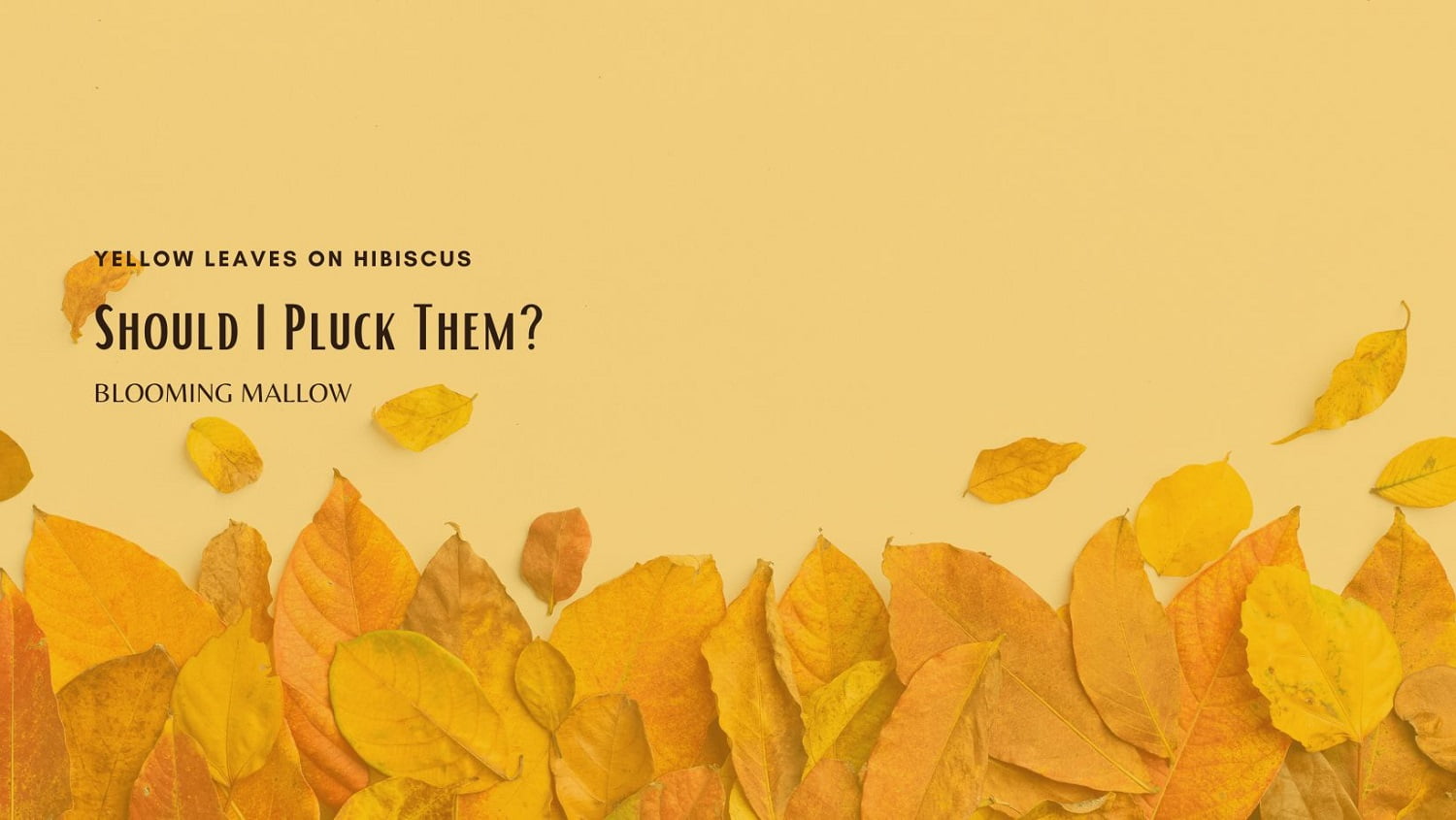
Beautiful, vibrant, and lush green plants are like magnets that draw people towards them. After all, who doesn’t like the feeling when someone praises their plants. It’s an instant gratification, isn’t it?
As a gardening enthusiast myself, I couldn’t agree more. Which is why, sometimes it’s necessary to make your plants look more presentable.
And one of the first things one usually does for this is remove yellow and dead leaves from the plant. But if you are wondering whether your beloved hibiscus is okay with such practice, then you are not the first one to think about it.
Why Do Hibiscus Leaves Turn Yellow In The First Place?
Many novice gardeners have a habit of overdoing things – and therefore, on their watch, even the most robust hibiscus dies after a short time.
As to why this happens: yellow leaves, white and yellow spots on the leaves, or leaves that are very light green are signs of nutrition deficiencies. And while you may be feeding them with huge quantities of fertilizers, sometimes an abundant supply of a particular mineral creates a deficiency of the other.
If you observe that much of your Hibiscus leaves are turning yellow with a peculiar odor, it means the plant has received too much water lately. On the other hand, if much of the Hibiscus leaves are yellow with brown spots, and upon squishing exhibit a crunchy sound, it typically shows the sign of underwatering.
But in addition to internal deficiencies, there are external factors as well responsible for causing yellow leaves: Extreme cold or hot climate, too little sunlight, pest or aphid infestation to name a few.
In fact, the pattern of yellowness in leaves is as varied as the probable cause. In some cases, the entire leaf does not discolor immediately. Which is why it is important to first get to the bottom of the problem.
- Yellow edges: A yellow edge around the leaf usually indicates an excess of a particular mineral. And we are not talking about the macro-nutrients like Nitrogen, Phosphorous, or Potassium, but rather Calcium. However dry weather or hot winds can also lead to these symptoms.
- Yellow-green leaves: This symptom is commonly observed on the entire plant and is often due to excessive lime content in the soil.
- Pale yellow leaves: Plants that lose their chlorophyll show this kind of behavior. Possible causes include poor drainage, root rot, extreme root bound, high alkalinity, and nutrition deficiency.
- Falling yellow leaves: Excessive yellowing of the leaves can be due to magnesium or iron deficiency. However, low sunlight and temperature drops are equally to be blamed.
As you can see, yellow leaves are usually due to improper care. But in particular, the location, watering frequency, and overfertilization influence the health of your plant. This is why you should provide Hibiscus with adequate sunlight, adequate nutrition, and just the right amount of water (I highly recommend reading this article to learn how much water hibiscus requires).
Of course, the leaves of hibiscus plants age and eventually die. So, if only a couple of leaves have turned yellow, this is certainly part of the normal aging process. In most cases, the lower leaves of the plants fall off as they are overshadowed by the taller leaves.
Given that most hibiscus plants tend to grow tall in their natural environment, this is their attempt to form a solid trunk.
And if this is the case, you can proceed with the following course of action.
Steps for removing yellow leaves from hibiscus.
- Pluck off completely yellow and/or discolored leaves from the base, i.e., the stem.
- If only the tips are yellow, just remove the affected area using scissors without cutting into the green.
- Remove fallen leaves from the ground so that they do not develop into mold.
Are Yellow Leaves On My Hibiscus Dead?
When a hibiscus leaf turns yellow, it generally indicates that it will die or is already dead. This is because the green color of the leaves is due to the presence of chlorophyll, and when the leaf turns yellow, it means that it has lost all of its chlorophyll.
Moreover, when the leaf turns yellow it loses its ability to absorb sunlight and therefore has no added value to the plant. And this mechanism is irreversible, so yellow leaf is nothing more than a lifeless part of the plant.
Can I Pluck Yellow Leaves Off Hibiscus?
It’s fine to pluck yellow leaves with your hands, just don’t pull too hard, or you may damage the healthy part of your plant.
In most cases, you do not need to apply any force either. If the leaves are completely yellow, a mere touch of your hand will break them off from the stem.
Why It Is Important To Remove Yellow Leaves From Hibiscus?
All plants, including hibiscus, attempt to restore their damaged part as a natural healing mechanism, and so they expend some energy and nutrients on the yellow leaves as well.
But once the leaf turns yellow, it cannot be cured. Which is why it is important to stop this natural healing mechanism by removing the yellow leaves completely from the stem. This saves a lot of nutrients and minerals that are wasted.
So, we recommend all our gardening enthusiasts to prevent their hibiscus from wasting away essential nutrients by plucking the yellow leaves from the stem. In return, the hibiscus will invest its energy on the healthy parts and in the formation of new leaves and buds.
Bottom Line
Pulling off wilted yellow leaves and cutting yellow edges from the leaves is an acceptable solution only if the count is low.
If most of the leaves are yellow, you should instead try to find the cause of the problem. Is the plant too much in the shade? Does it need more or less water? Or have you over-fertilized again?
If you investigate these questions and modify your nurturing practices, you can avoid excessive yellow leaves – and eventually make your hibiscus a lot greener.
And while we are at it, you may also be interested in knowing whether you can pluck out spent flowers. The answer is slightly tricky to answer in one word. Read this detailed article to learn whether or not you should deadhead hibiscus plants.
Happy gardening!




